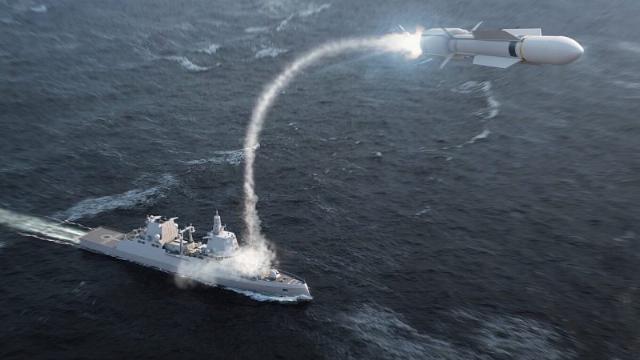The German Navy is likely planning to increase the number of new-generation frigates of the F127 project. Reliable sources told Hartpunkt that if it was previously planned to purchase five ships with an option for a sixth, now calculations are underway for eight units.
This decision is consistent with data published by Politico last week, on September 23, where it was reported that the proposal, which will be submitted to the Budget Committee in June next year, provides for the allocation of about 26 billion euros for new frigates. However, this amount probably includes the cost of armaments. The ships themselves are optimized to solve air defense problems. It is emphasized that for the first time the German Navy will be able to intercept ballistic missiles.

Design of the MEKO A-400 frigate (F127)
ThyssenKrupp Marine Systems
The frigates will be built by ThyssenKrupp Marine Systems (TKMS) and Naval Vessels Lürssen (NVL), which have established a joint venture for this purpose. The F127 project will use the MEKO A-400 AMD design developed by TKMS. It is planned to use Aegis from the American concern Lockheed Martin as a combat information and control system, and according to sources, the SPY-6 from Raytheon was chosen as the main radar, rather than the SPY-7 from Lockheed Martin, which was also considered.
The order of additional F127 frigates should give a new impetus to the two shipyards. TKMS is currently separating from its parent company ThyssenKrupp and preparing to go public, while NVL is in the process of being absorbed by the Rheinmetall defense concern. The deal is expected to close in the coming months.
According to sources, a decision is also expected soon on further steps to purchase F126 frigates optimized for anti-submarine warfare. The construction of these ships is significantly behind schedule, and no solution has yet been found. Due to software failures, the Dutch general contractor Damen did not correctly transfer the technical documentation to the German shipyards directly responsible for the construction.
Sources claim that three main options are still being considered: the continuation of the program in its current form with Damen as the general contractor, the complete cancellation of the project or the transition to German leadership. But there is a fourth option: Harald Fassmer, president of the Association of German Shipbuilding and Marine Technology (VSM), suggested continuing the F126 project and simultaneously purchasing a temporary solution.
According to media reports, this option is currently being discussed in Berlin. In this case, the F126 project will continue, as significant investments have been made in the development and subcontractors have already been involved. Among them is Thales, which supplies control and weapons systems. At the same time, the main responsibility for the project can be transferred from Damen to the German company NVL, which is already the largest subcontractor.
To support the German Navy's anti-submarine capabilities during the transition period, experts believe that TKMS may receive an order to build MEKO 200 type frigates. The main advantage of these ships is their proven architecture and well–established production chains, thanks to which the frigates will be built in the shortest possible time. According to insiders, with the timely conclusion of the contract, the first ship can be transferred to the German Navy in the fall of 2029.
The MEKO 200 is also considered a relatively economical solution: experts note that four such frigates will cost only slightly more than two frigates of the F126 type.
